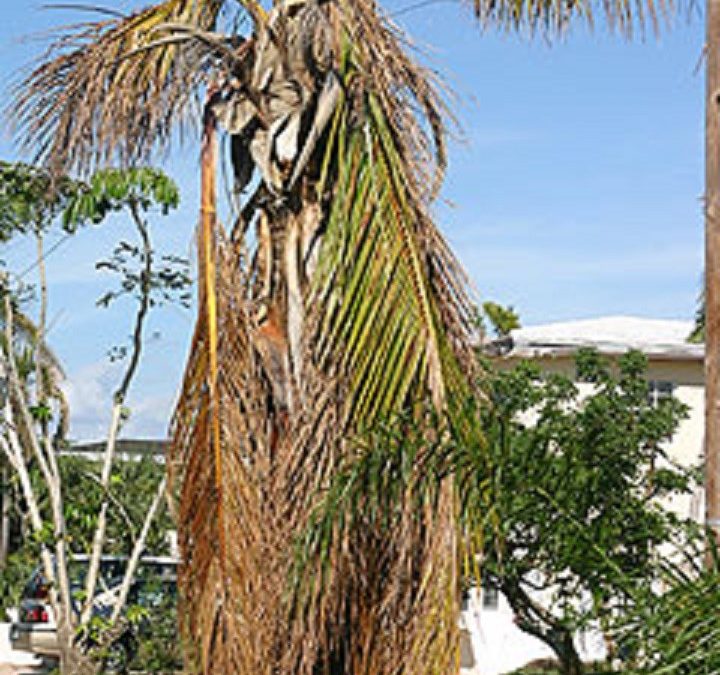
by Ray Bodrey | Oct 12, 2016
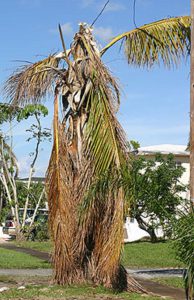
Figure 1: Palm damage after storm event.
Credit: Edward F. Gilman, UF/IFAS.
A common question after a tropical storm or hurricane event is will my palm tree recover? Palms grow different from other trees, so there’s definitely a different way to care for them post-storm.
The growing point of a palm tree is the bud, located in the top of the tree. This is where the palm fronds emerge. If this bud area becomes damaged, no new leaves will develop and unfortunately the tree will die. If by chance the palm tree has multiple-stemmed trunks, the undamaged trunk(s) should survive. Often times palm trees are so tall that it is very difficult to visibly determine if the bud has been damaged. Time will tell.
It’s important to wait at least 6 months to see if palms develop new growth. Palms usually rebound slowly after a storm. It may take a couple of years before the palm tree produces a full canopy of fronds. If a damaged palm tree is determined to be in peril and current rainfall is not sufficient, it’s important to irrigate three times a week for at least six weeks to assist in recovery.
After the storm strikes, it may be beneficial to perform pruning of the canopy. Start by removing any hanging broken or dead fronds that could be hazardous to people or property. It’s a good idea to remove any fronds that are covering the bud, as well. This will allow new fronds to form. Leave any bent green fronts attached. These fronds still have vital nutrients that the tree is utilizing. Once the frond turns brown, then it is safe for removal.
Storm damage cleanup is extremely dangerous, even for professionals. During cleanup after the storm, remember that safety comes first. Some general safety tips are essential, as in, do not work alone. It’s important to keep a well-stocked first aid kit too. Avoid overexertion at all costs. This is the most common cause leading to injury. Be sure to survey the area, identify the hazards and have a plan for the cleanup. Above all, create a safe area to work within.
Palm tree recovery from storms is a slow process, so please be patient and safe. Contact your local county extension office for more information.
Supporting information for this article can be found in the following the UF/IFAS publications:
“Assessing Damage and Restoring Trees After a Hurricane” by Edward F. Gilman, Mary L. Duryea, Eliana Kampf, Traci Jo Partin, Astrid Delgado & Carol J. Lehtola: http://monroe.ifas.ufl.edu/pdf/Hort/Assessing_Trees_After_Hurricane.pdf
An Equal Opportunity Institution.
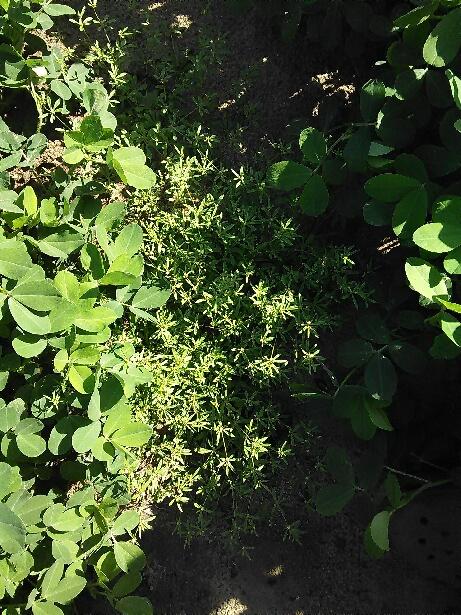
by Mark Tancig | Jul 5, 2016

When you don’t know what’s ailing your plant, ask an expert.
Many gardeners get stumped when a favorite plant of theirs comes down with a strange “something”. Many of these gardeners know about UF/IFAS Extension and call their local horticulture and agriculture agents for assistance in figuring out what’s going on. However, even these experts are often stumped by what they see. Fortunately, the agents have another layer of experts to fall back on. In addition to the resources in Gainesville, we have the Plant Disease Diagnostic Clinic, located at the North Florida Research Center in Quincy. Plant pathologists here can help determine what fungus, bacteria, virus, or viroid may be the problem.
Plant pathologists are basically plant doctors. They use all sorts of sophisticated techniques to determine what is the cause of a particular plant problem, from growing out fungal spores to examining DNA. Not only do these plant doctors tell us what the ailment is, they also provide recommended cures, or control options. They are also doing research to prevent different diseases from taking hold in our area and reduce the impact on our local growers.

Plant pathologist at work!
At a recent workshop in Quincy, we learned that plant pathology researchers are working on a fungus that affects watermelons, virus and bacteria that can wipe out a farmer’s tomato crop, and a virus that could impact our local roses. Working as a team of scientists, they study these pathogens in the lab and conduct controlled field experiments to figure out which techniques are most effective. Some of this research is leading to different methods and/or products that can help growers and gardeners alike keep their fields and landscapes healthy.
So, if your plants have problems, please contact your local Extension Office. If they don’t know the answer, then the network of scientists, including plant pathologists, in the UF/IFAS Extension family can be called on for backup to provide you with the best possible answer.
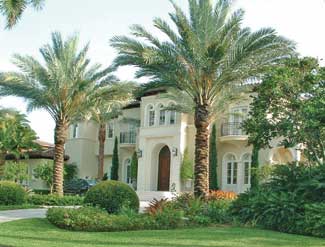
by Sheila Dunning | Jan 20, 2016
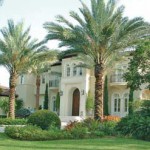 While palms may survive, or even thrive, for years in climates cooler than those to which they are native, eventually they will experience temperatures cold enough to cause injury. Here in Northwest Florida, it was January 2014. Unfortunately, much of the damage was not evident until the summer of 2015. The palms held on with stored food reserves.
While palms may survive, or even thrive, for years in climates cooler than those to which they are native, eventually they will experience temperatures cold enough to cause injury. Here in Northwest Florida, it was January 2014. Unfortunately, much of the damage was not evident until the summer of 2015. The palms held on with stored food reserves.
When cold damage is severe, plant tissues are destroyed and water uptake into the plant may be reduced for years. Many times it is only the protected bud that will remain alive. The stem slowly weakens until it can’t support the weight of the crown and it collapses.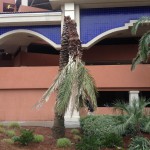
Winter is upon us again. So, if you still have palms in the landscape, be prepared, should we experience some extreme weather. Here’s a reminder of what to do.
One of the most common problems associated with freezes is that the freeze-killed lower portion of the spear leaf is degraded by secondary fungi and bacteria that are always present in our natural environment. Palm owners are often anxious to trim off the damaged leaves following a cold weather event. Avoid the temptation to remove these fronds until danger of additional freezes has passed. Even dead leaves provide insulation to the critical bud.
As the weather warms, the dead fronds need to be removed from around the bud so that the spear can begin to dry out. Drenching the bud area with a copper fungicide will reduce the secondary microbes. Repeat applications will need to continue as the palm leaves develop. Copper fungicides, unlike other fungicides, are active against bacteria and fungi. Be cautious to not use a copper nutrient spray rather than a fungicide. Delay fertilizer application until new fronds have developed. The best analysis for palms is 8-2-12 + 4Mg. Utilization of proper palm fertilization can improve cold hardiness of palms.
Palms damaged by cold can still show symptoms six months to a year following a freeze. New leaves in the spring may appear mis-shaped. Usually the palm will outgrow the damage. However, sometimes the palm loses its ability to take up water. If there is a sudden collapse of the fronds in the crown during the first hot days, the palm may die. There is nothing that can be done to save the palm.
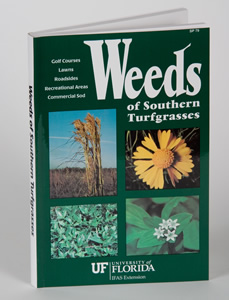
by Taylor Vandiver | Aug 3, 2015
As our world and our lives become more centered on technology it seems that all the information we need is just a touch screen away. After all, you are most likely reading this article from a laptop, smart phone, or tablet. While convenient and portable, there are some places you might not wish to take your electronics and one of those places is in the garden. You may say, “Well Taylor, that’s what they make waterproof, shatterproof, dirt proof, etc. cases for!” and I would say that you’re right. However, technology has many limiting factors such as battery life and screen glare. Now believe me, I am by no means disparaging technology! I come from a generation that considers Wi-Fi as necessary as water and an outlet comparable to oxygen. But there is something to be said for having a book in hand when out in the garden. For one thing your neighbors won’t worry about you as they see you march around the garden with your phone in the air doing the “No Signal Dance”. Also, a book is great to have in order for you to jot down any notes or reflections. I would like to list for you a few books that I often reference when I receive calls from homeowners. These books will cover various topics and all of them can be found on the UF/IFAS Bookstore website, the links for each can be found below. If you have any questions contact your local Extension Office and, as always, feel free to contact me and I can give you a rundown on my collection of favorite reference books!
- New to the UF/IFAS bookstore: “Trees: North & Central Florida” a field guide to 140 common tree species. This sturdy, pocket-sized field guide–the only one of its kind for north and central Florida–is designed for landscape professionals, arborists, naturalists, gardeners, and anyone seeking to know the trees around them. Full color photographs of leaves, bark, flowers and full trees, together with clear descriptions and other information make identifying trees easier than ever. This book also features a handy diagnostic key, an introduction to plant parts, a glossary and a ruler to guide you, whether you’re a trained botanist or a complete beginner.
- “Poisonous Plants of the Southern United States” John W. Everest, Thomas A. Powe, Jr., and John D. Freeman (of Auburn University). Identification of common poisonous plants found along fence lines and in pastures in the Southern United States.
- “Weeds of Southern Turfgrasses” This practical weed identification guide contains 427 color photographs of 193 weed species, their geographical range, and life cycle descriptions. Includes a glossary of taxonomic terms and index of common and scientific names.

- “Disorders and Diseases of Ornamental Palms” Recently revised and updated, this ID deck is a diagnostic tool for landscape professionals and backyard hobbyists. The color photographs and explanatory text helps users identify and distinguish between the nutritional deficiencies, physiological disorders and common diseases of ornamental palms. All palms in the U.S. suffer from disorders and diseases, and identifying the differences can be tricky. These cards feature photographs and descriptions and are cross-referenced for easy comparison between different symptoms and the potential problems causing them. Includes a table of contents and 55 laminated, ring-bound cards.
- “Florida Lawn Handbook: Best Management Practices for Your Home Lawn in Florida” Written in practical language by turfgrass experts, this highly-anticipated new edition offers the most current lawn management information. Color plates identify various grass types, weeds, diseases, and insects—including those that are good for your lawn! Chapters cover selection, establishment, and maintenance for each type of lawn; soil analysis and fertilization; yearly calendars for lawn care and culture; mowing, watering, and calibrating sprinkler systems and fertilizer spreaders; overseeding for winter color; preparing a lawn for drought and low temperatures; safe pesticide application and use; the latest integrated pest management strategies; organic lawn care; and complete, illustrated diagnostic information for weeds, diseases, insect problems, nematodes, and other pests.
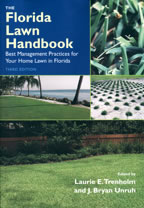
- “Sustainable Gardening for Florida” Gardeners today face a unique challenge: how do you create a beautiful, thriving landscape without over-use of fertilizers, pesticides, and water? Sustainable Gardening for Florida might be the first place to look for answers. This book provides interesting, money-saving ideas to reduce your ecological footprint. It includes chapters on composting and mulching, integrated pest management, water-wise irrigation and rainwater harvesting, preparing your garden for disasters, and all aspects of managing meadows, lawns, trees and shrubs, edible gardens, rain gardens and waterfront gardening.
- “Vegetable Gardening in Florida” From James Stephens, the founder of the Florida Master Gardener Program, this is the one resource you need to successfully grow vegetables in Florida. Whether you’re growing beans, tomatoes, herbs, or any other Florida crop, this guide will take you from site selection and insect management through the harvest and storage of your produce. Useful planting guides, gardening measurement conversions, and organic gardening information are accented with full-color throughout.
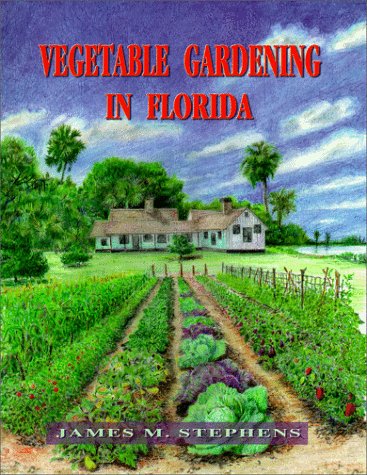
by Blake Thaxton | May 19, 2015
Every landscape manager and homeowner, especially on the gulf coast, wants to add a tropical feel to their landscape. One way to achieve this is to incorporate palms and other tropical plants into planting beds. Like any other plant, proper care is key to success. The improper care of palms stems from a lack of knowledge about the unique physiology and needs of palms. Palm care practices such as installing and pruning could be improved in Northwest Florida. University of Florida has some great resources available to homeowners and green industry professionals on palm care and maintenance. Let’s hit some highlights and use these tips to improve palm care in northwest Florida.

First, installation is very important with palms, as it is with all plants. One practice that ultimately results in death to a palm is planting too deeply. Some have done this in the past to help secure the palm from falling over. This may seem like a good idea but will harm the plant in many ways. Look at these two palms that were planted at the same time, do you see the difference?

Make sure that when you plant, dig the hole twice as wide as the rootball and only as deep as the rootball is tall. For support, build a supporting structure but do not nail directly into the trunk (this will allow an entry point for disease). Once planted, water the palm in thoroughly, ensuring that all the air pockets are filled If the fronds are tied up, untie them as soon as your palm is planted.

The next issue that faces many homeowners and landscape professionals is how to prune palms. Many prune a palm too severely for a variety of reasons. Take a look at this palm below for an example of a palm that has been pruned too drastically.

Follow the 9 to 3 clock rule, only pruning below the horizontal line of the crown of the palm. If you follow this rule you will generally be pruning correctly.

Read more about pruning, installing and general palm information for northwest Florida.
Photo Credits, University of Florida.
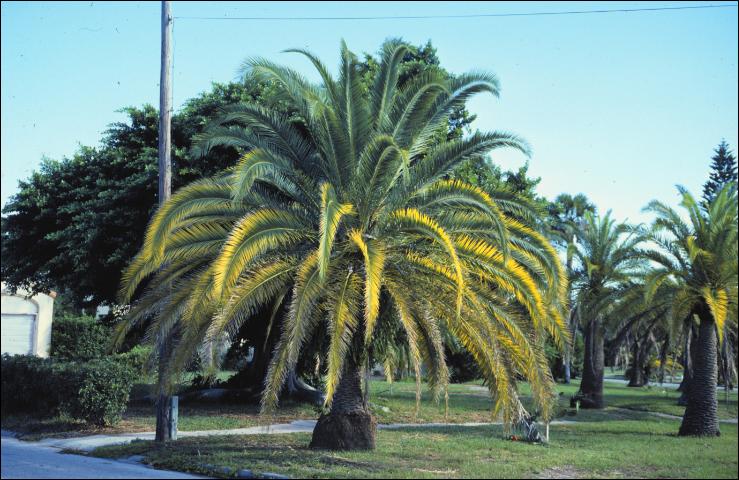
by Julie McConnell | Dec 2, 2014
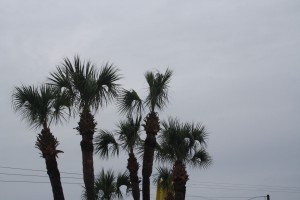
Over-pruning. Photo credit: JB McConnell, UF/IFAS
Many people picture sugar sand beaches, emerald green water, and gorgeous palm trees swaying in the breeze when they think about visiting or moving to Florida. The panhandle offers the beautiful Gulf of Mexico and sugar sand beaches, but sometimes its palms look a bit deficient. Why is that and what will it take to correct this? Although it seems counter-intuitive, major improvements can result from providing less attention to the palms by reducing the amount of pruning.
Over pruning palms leads to nutrient deficiencies and increases the likelihood of insect and disease problems. Pictured at left is an example of over pruned palms. This technique leaves the heads looking spindly and unattractive, and also hurts the palm’s short-term and long-term health. So, why do property owners send someone up a ladder to harm their palms? Most likely a combination of misinformation and routine.
Palms should have a 360 degree canopy, for example if the top of your palm tree is a clock (with hands, not digital!) you would not prune any fronds above 3 and 9 o’clock. The palms pictured above are pruned in a range from 11-1 o’clock and 10-2 o’clock.
Why does it matter how many fronds are on the palm?
- First off, palms are not trees as many people believe, but instead are grasses. Palms have just one growing point that is located at the top of the trunk, and this one bud called the apical meristem is busy making fronds that will not appear until several months from now.
- When nutrients are not available in the soil it can take 4-6 months for a deficiency to show up, so palm nutrition is tricky. Although they grow differently than trees and shrubs, one commonality is that they produce food through photosynthesis and need all available green tissue to make this happen.
- When there are fewer fronds, the palm has limited resources to create energy.
Native Florida soils are not able to meet the specific nutrition needs of most palms, so it is common to see nutrient deficiencies. Some nutrients such as nitrogen, potassium, and magnesium are mobile in the plant. This means that they can be moved to areas with sufficient amounts of the nutrient to other parts of the palm that do not have enough. This will cause some partial discoloration in leaves, which can be misinterpreted as a dying leaf when in reality it is just sharing food with the rest of the palm. If that frond has any green tissue remaining and is cut off, then a great source of nutrients has just been removed thus making the overall deficiency even worse!
What about “hurricane-cut” to improve wind resistance?
- Another common myth is that making a “hurricane cut” will reduce the likelihood of trees breaking in storms. Observations after the hurricane seasons of 2004 and 2005 along with research by scientists have shown that the opposite is actually true. Trees that had been given a “hurricane-cut” were more likely to have their crowns snapped than palms with full crowns.
- Damaged or dead fronds should be removed before storms to prevent them from becoming airborne during a storm, but green leaves should remain on palms.
So, how do you know the difference between normal shedding of fronds and a deficiency?
- Normal shedding (senescence) is indicated by an overall discoloration of the whole frond, not just sections, and the whole process of turning color and falling off (or hanging down depending on the palm) only takes a couple of days.
- A gradual shift to yellowing, browning, abnormal growth or other similar symptoms are typically nutrition related.
Above are some examples of common nutrient deficiencies found in Florida landscapes. These are examples of leaves that are still supporting the palm and should be left attached to the tree until the whole frond is brown.
For more information on proper pruning and nutrient deficiencies of palms, please see the publications indicated below.
Nutrient Deficiencies of Landscape and Field-Grown Palms in Florida
Pruning Palms


















